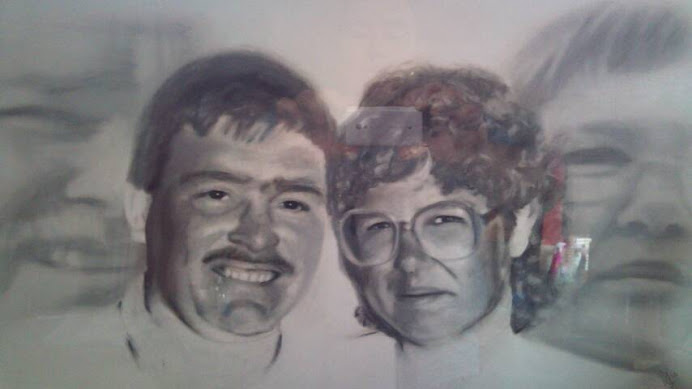Now there's a rare treat back in Wales. One of the gang bought me a small slab of Ghanaian Chocolate amongst other presents for Father's Day. If you have never tried any folks, then the best way I can describe it; is like our dark chocolate, but an awful lot stronger.
The sort of taste that if it wasn't 'your cup of tea', then a nice ice cold Pear Cider would be an ideal accompaniment. If you get my drift. It certainly isn't like our Cadbury's. Then again, that isn't everyone's cup of tea either. I prefer Cadbury to most, but then again you can't beat a good Thorntons. Apparently Cocoa is so important to the Ghanaian economy that the Cocoa Board has a Cabinet level politician and Cocoa is the second highest earner of export dollars for Ghana. The bottom line regarding the chocolate, is that what we think is good, isn't always regarded as that good by others. So trying to compare Ghanaian chocolate with ours is a tad difficult. The chocolate is so different, that for me, it is like trying to compare apples with oranges. But remember, Ghana export so much of their quality cocoa, it's highly likely that your favourite nibble has some in its recipe, or is made up entirely of Ghanaian Cocoa Beans.
Ghanaian Chocolate; "It's chocolate, Jim, but not as we know it."
27 June 2011
Thingamajig and Mathematics et al
I have mentioned in a previous Blog posting how we like to think that we are good at something and then someone comes along who is a whole lot better at the same task.
The other side to this position in life is those things that we are not very good at. Indeed sometimes, we are so bad that we are next to useless. Then all of a sudden something clicks and we are up and running. Worse still, all too often we don’t actually know what influenced the change.
Quite a few years back, mathematics was my “thing that I can’t do”. I recall my friend Adam explaining that it was not magic, and that there were a series of rules that had to be understood and then applied as appropriate to whatever mathematical problem was being scrutinised. Don’t ask me how, probably with the help of Adam, Daniel, and Joe; I overcame the mental block and went on to score an astonishing 86% in my University examination. It sort of clicked.
My latest ‘Wall’ is airbrushing. As an accomplished artist, it follows that I should be reasonably good. With a few degrees behind me, it also follows that I should understand the principles involved and be able to work through to find the solutions. But that has not been the case. Maybe, some of the problems are from being unwell, maybe there was a lack of confidence, but whatever the problem, not only was the ‘Wall’ still intact, but it had started to get bigger. Now there's nothing worse than a big wall when you aren't capable of climbing.
Then suddenly, for absolutely no good reason (other than stumbling upon a few solutions through trial and error) I am now wondering what all of the fuss was about. The 'capability' started off by accidentally putting the thinners into the mixing pot that connects to the airbrush and then adding the paint. This ensures that the thick paint doesn't clog the paint flow orifice from the paint holding pot into the airbrush and go on to clog the airbrush nozzle as well. Adding the thinners first, ensures that no clogging occurs. Followed by realising that airbrush nibs (the type that I use) come apart into three sections, all of which were easy to clean in water. Then I worked out that you layer it and wait between coats for the paint to dry. And don’t forget to blast it off to one side (in the cardboard box that doubles as my spray booth) before sweeping a stroke across the object that is being sprayed. The reason for that is to ensure that any start-up droplets (instead of the required and previously often hoped for, fine mist) land on the box and not the object being sprayed.
So says the man who up until a few days ago couldn’t get any of the nibs to work, didn’t know that they came apart, and didn’t know how to mix paint for airbrushing. I also didn’t understand what the variable thingamajig on the airbrush was for. Then out of the blue it all comes together.
It’s a strange world isn’t it?
The other side to this position in life is those things that we are not very good at. Indeed sometimes, we are so bad that we are next to useless. Then all of a sudden something clicks and we are up and running. Worse still, all too often we don’t actually know what influenced the change.
Quite a few years back, mathematics was my “thing that I can’t do”. I recall my friend Adam explaining that it was not magic, and that there were a series of rules that had to be understood and then applied as appropriate to whatever mathematical problem was being scrutinised. Don’t ask me how, probably with the help of Adam, Daniel, and Joe; I overcame the mental block and went on to score an astonishing 86% in my University examination. It sort of clicked.
My latest ‘Wall’ is airbrushing. As an accomplished artist, it follows that I should be reasonably good. With a few degrees behind me, it also follows that I should understand the principles involved and be able to work through to find the solutions. But that has not been the case. Maybe, some of the problems are from being unwell, maybe there was a lack of confidence, but whatever the problem, not only was the ‘Wall’ still intact, but it had started to get bigger. Now there's nothing worse than a big wall when you aren't capable of climbing.
Then suddenly, for absolutely no good reason (other than stumbling upon a few solutions through trial and error) I am now wondering what all of the fuss was about. The 'capability' started off by accidentally putting the thinners into the mixing pot that connects to the airbrush and then adding the paint. This ensures that the thick paint doesn't clog the paint flow orifice from the paint holding pot into the airbrush and go on to clog the airbrush nozzle as well. Adding the thinners first, ensures that no clogging occurs. Followed by realising that airbrush nibs (the type that I use) come apart into three sections, all of which were easy to clean in water. Then I worked out that you layer it and wait between coats for the paint to dry. And don’t forget to blast it off to one side (in the cardboard box that doubles as my spray booth) before sweeping a stroke across the object that is being sprayed. The reason for that is to ensure that any start-up droplets (instead of the required and previously often hoped for, fine mist) land on the box and not the object being sprayed.
So says the man who up until a few days ago couldn’t get any of the nibs to work, didn’t know that they came apart, and didn’t know how to mix paint for airbrushing. I also didn’t understand what the variable thingamajig on the airbrush was for. Then out of the blue it all comes together.
It’s a strange world isn’t it?
Subscribe to:
Comments (Atom)

Custom Search




